Lords of the Dark Souls clone
By AtheistPreacher 12 Comments
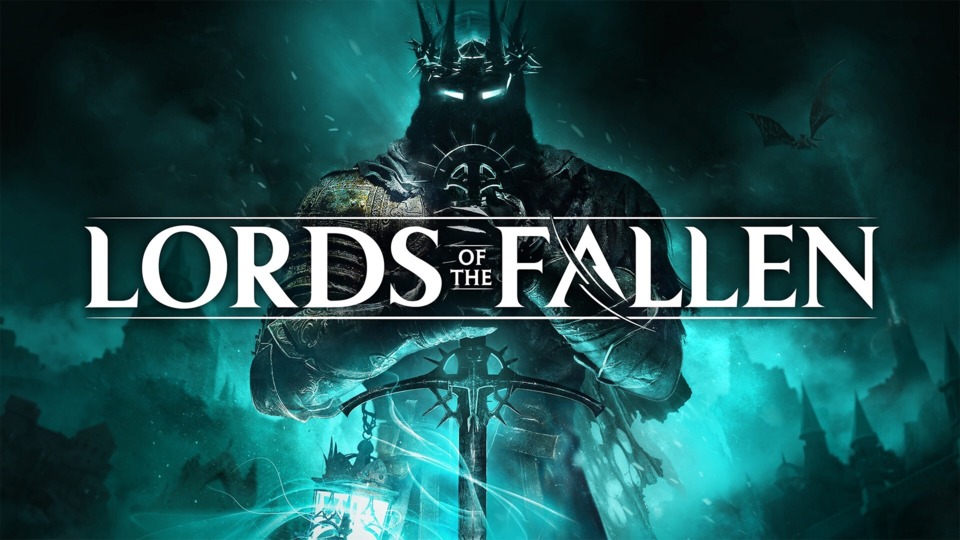
Lords of the Fallen was released on October 13, a sequel of sorts to the 2014 game of same name. Like its predecessor, it wears its influence on its sleeve—it makes no attempt to hide the fact that it’s aping the formula of From Software’s Soulsborne titles. In fact, it looks and feels more like a Soulsborne game than any other pretender to the crown to date. Whether that’s a good thing or not largely depends on where your tastes lie.
Lords of the Fallen does do some genuinely new and interesting things, and those divergences and tweaks from From Software’s established formula are some of its greatest strengths. However, it also carries over a fair number of design decisions seemingly just because that’s the way From Software has always done it, things that might have better been left by the wayside or made more user-friendly. Then, too, it has its own share of totally original shortcomings.
Development history
The original 2014 Lords of the Fallen was developed by the Frankfurt-based Deck13 as the first true triple-A attempt at producing a Dark Souls clone. It did not go very well. It came out to tepid reviews, and was a game that I was never much interested in playing, given the footage I saw. Eventually it did get released as a free PS+ game, at which point I downloaded and fired it up out of sheer morbid curiosity, only to find that the gameplay felt as clunky as it had looked in videos. It didn’t even feature an omni-directional roll; instead, players were confined to rolling forward, backward, or straight to the sides. It just didn’t feel good to play at all.
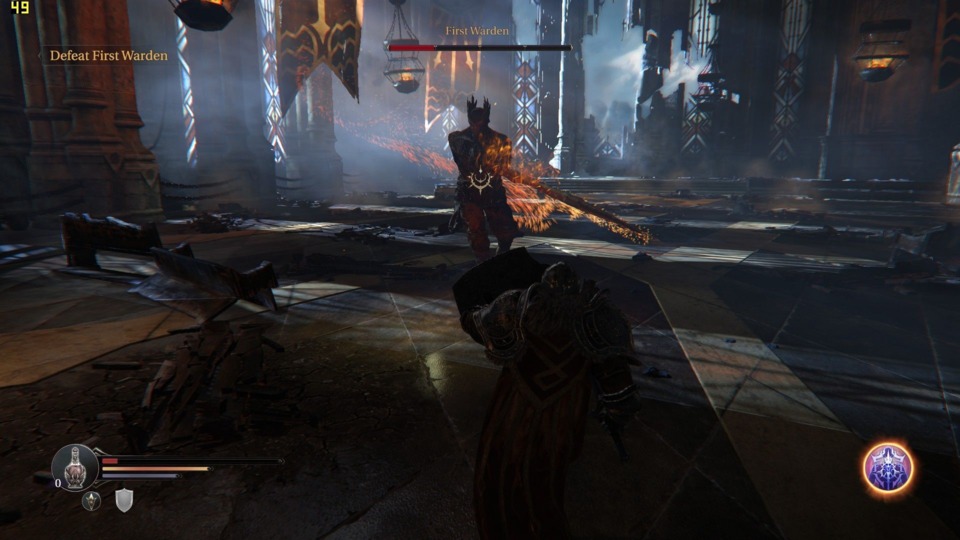
Deck13 did seem to learn from the experience, though, because they went on to develop The Surge (2017) and The Surge 2 (2019), which were much better games that were less clunky gameplay-wise and had more of their own distinctive feel. They’re some of the better examples of the genre.
Until only a few weeks before release, I assumed (very reasonably, I think!) that Deck13 was also developing this new game. In fact, the game’s publisher, CI Games, had announced a sequel in 2014 (to be released in 2017) and confirmed in 2015 that Deck13 would not be involved. It then spent a few years in development hell and switched devs at least once before CI Games founded a new studio in 2020 specifically to develop the Lords sequel: Hexworks, based in Barcelona and Bucharest. This is their first release.
It does feel somewhat strange that CI games decided to reboot the series rather than just establish a new IP and wipe the slate clean. The original 2014 game doesn’t exactly have great name recognition or a stellar reputation. Maintaining the IP made more sense when it was set to be a 2017 sequel, and I suspect that sheer momentum and administrative nonsense kept it from being a clean break.
Worlds apart
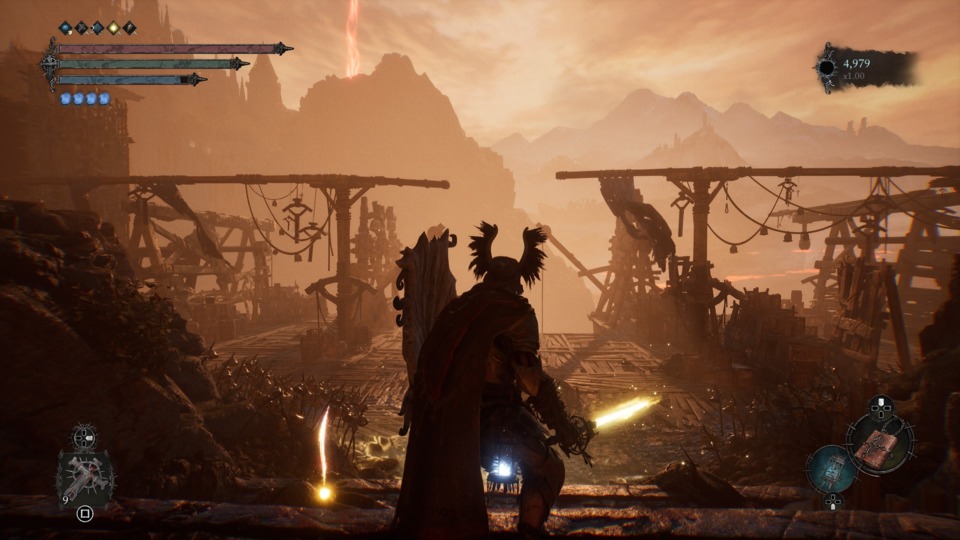
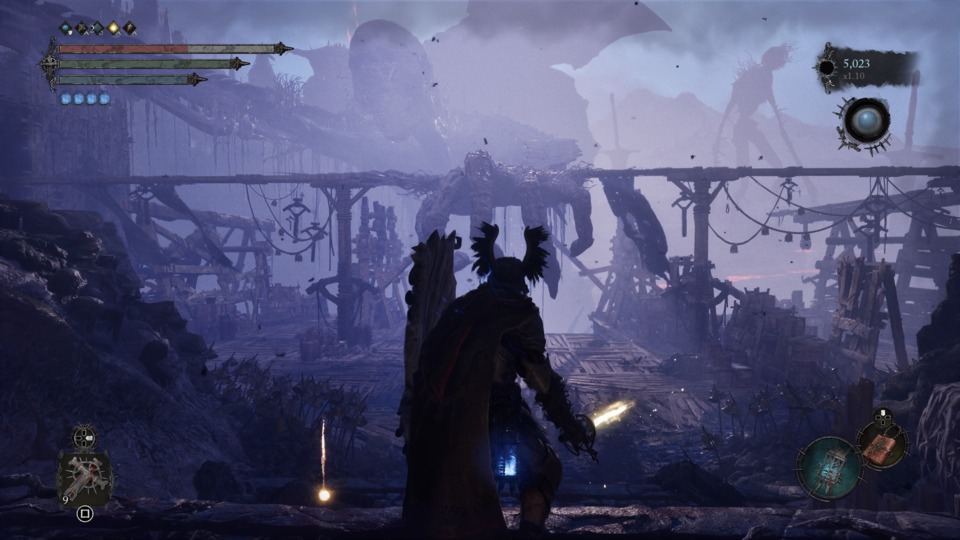
The biggest star of the show is Lords of the Fallen’s dual world. It is divided into the world of the living ("Axiom") and the world of the dead ("Umbral"), both of which exist at the same time and in the same space. The player is equipped with an “umbral lamp” that, when held up, reveals the umbral realm by its eerie blue light. The two realms are the same, but different: a lake in the living world might be drained in the umbral realm, allowing you to walk along the bottom; a bridge may exist in the umbral realm in a place that is otherwise blocked. This mechanic not only creates opportunities for interesting puzzles that require shifting between realms, but is also a clever new way of hiding loot. Overall, it makes exploration a lot more interesting.
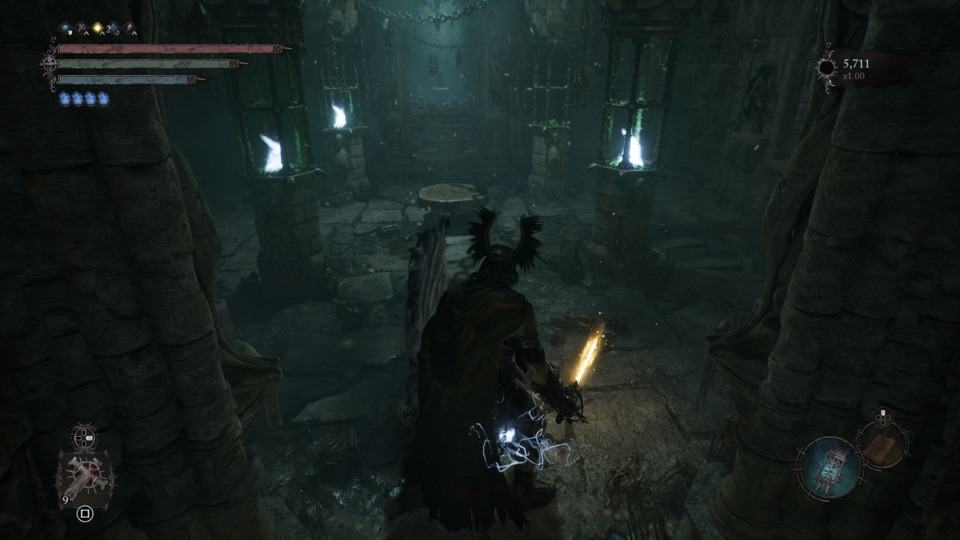
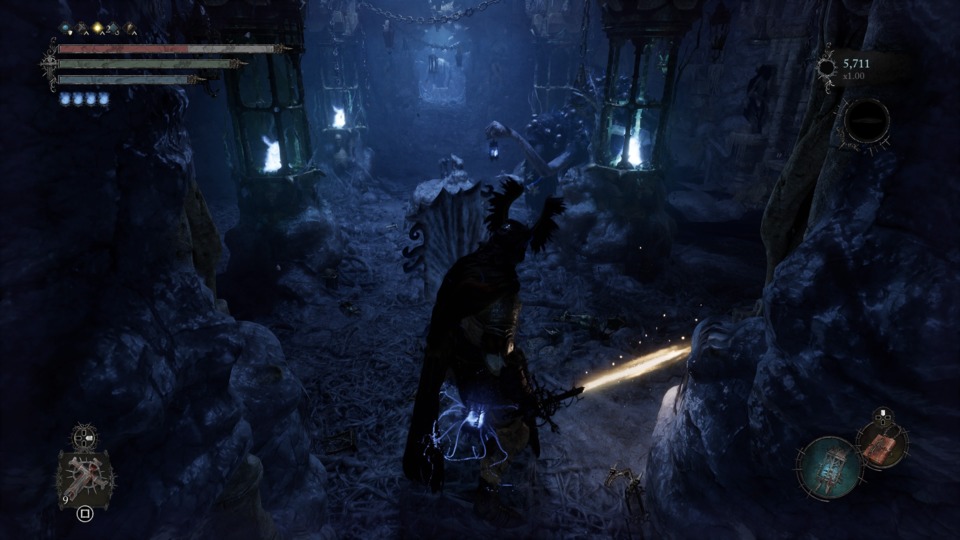
The umbral realm also serves the dual purpose of being a second chance at survival. If you die while living, you are sent to the realm of the dead (providing a second shot at a boss, for instance). But it’s not a place you want to be for long. It contains enemies that do not exist in the living world, which you have to fight in addition to other enemies rather than instead of. There’s also a circular meter around an eyeball on the upper-right of the screen that, as it fills, increases the danger by spawning more and more undead enemies, culminating in a powerful reaper-like enemy after five minutes or so. You have to find specific markers to return from the umbral realm, though you can always elect to transition to umbral anywhere and at any time.
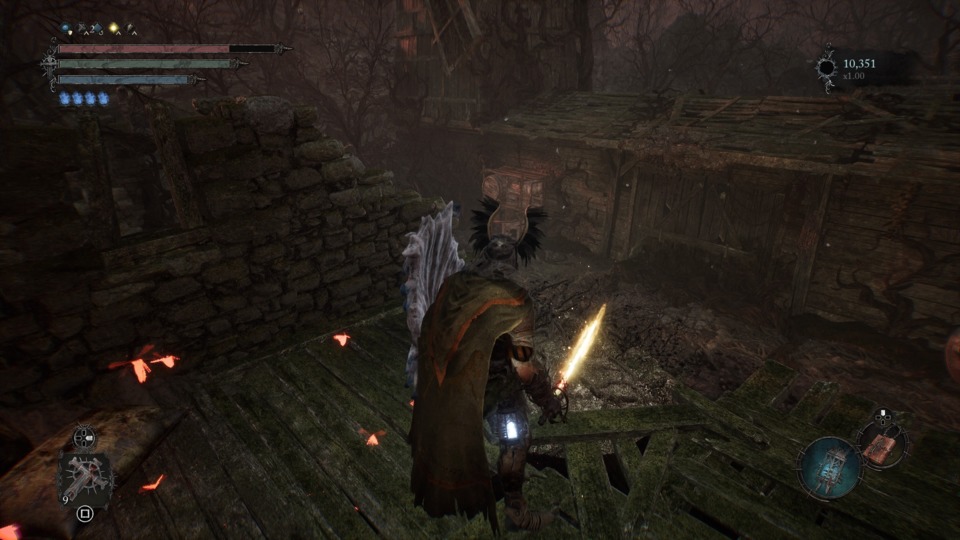
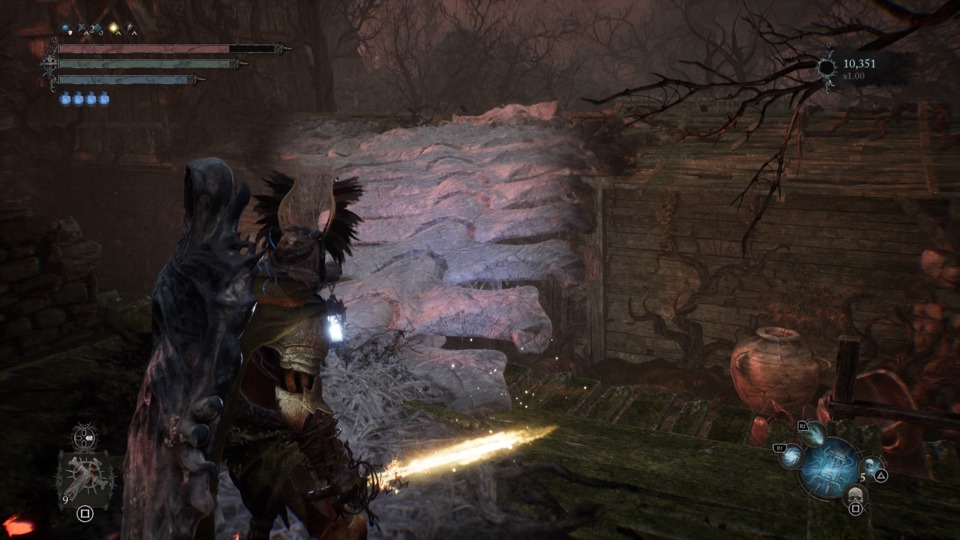
A particularly nice touch is that merely holding up your umbral lamp makes the things it reveals interactable, even without a full transition to umbral. This can work for or against you. On the one hand, you can sometimes simply hold up your lamp to walk across an umbral bridge, or past a gate that exists in the real world but not in umbral.
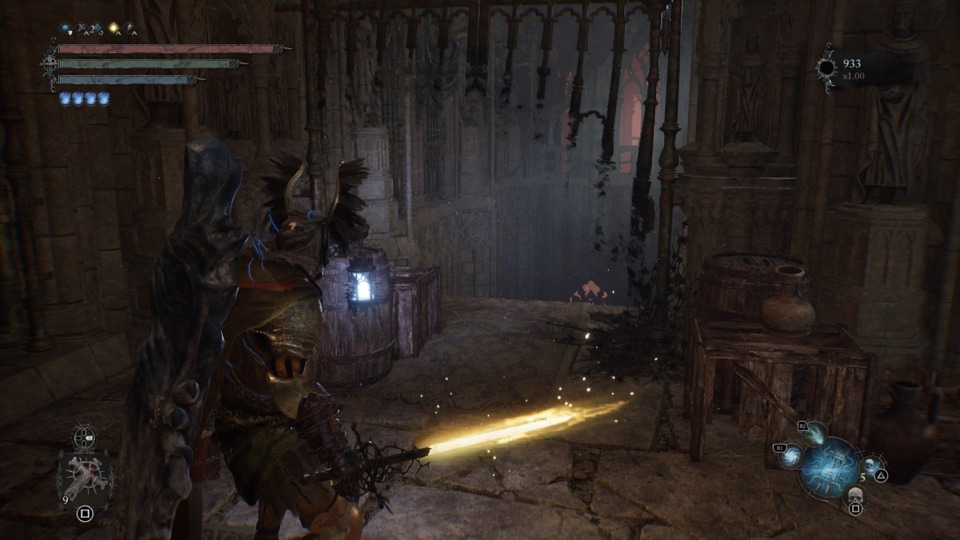
On the other hand, your lamp also opens you up to possible attack from umbral enemies. If your lamp reveals an enemy, it is then able to strike you, pulling you immediately into the umbral realm. This and other umbral realm mechanics really make it feel like a place that is properly spooky and terrifying: even taking a peak can literally be worth as much as your life.
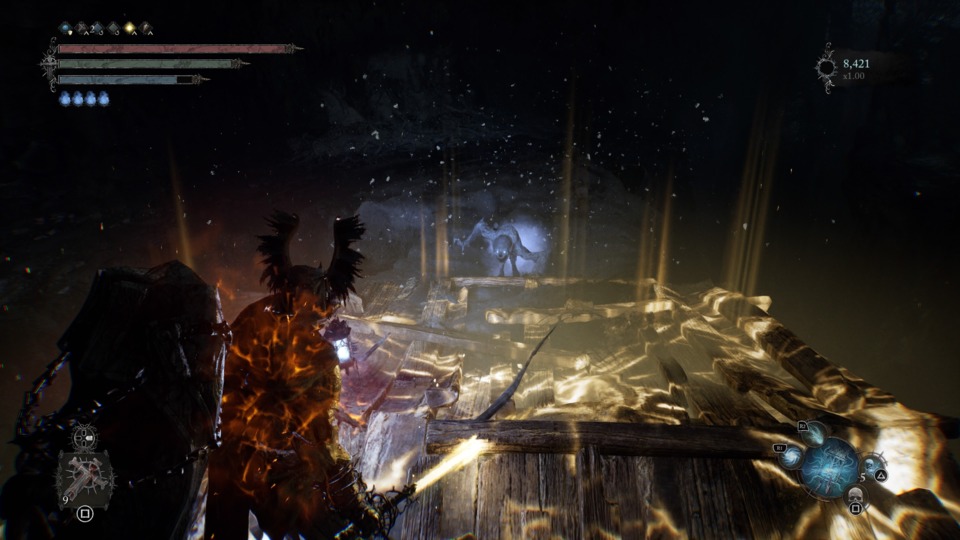
The umbral lamp also has some other interesting uses. It can “soulflay” a target, temporarily ripping its soul out of its body and allowing you sneak in some free hits for a few seconds. And, since after a soulflay the target's body will teleport to the location of its soul, you can actually yank enemy souls off cliffs and watch them plummet to their deaths a few seconds later. At times, it is also the key to defeating enemies that are otherwise invincible in the living world by destroying umbral parasites that lend them an unnatural vitality.
All of this stuff just really works. I’ll admit that when I first saw a preview of the mechanic, I worried that I might hate it: checking every corner with my lamp did not sound like a fun time, and I worried that traversing the world might feel needlessly convoluted, rather than interesting. But after I got used to things a bit, those concerns largely fell away. Exploring the world is the game’s best feature.
If there’s one criticism I have of the mechanic, it’s that everything Hexworks has done to make the umbral realm inhospitable has contributed toward a tendency for the player to simply run through areas and past enemies in a mad dash for the next rest point—because when you’re in umbral, the ticking meter means that your usual priority—especially in a new, unexplored zone—is to return to the living world as soon as possible. That’s too bad, because there’s so much cool detail to take in.
To a certain extent, that tension between the umbral realm’s distinctive feel of dread and the need to sometimes just run away was probably unavoidable. But where it gets a little more frustrating from a design perspective is that there are certain ghostly story scenes/memories that can only be triggered and watched while in the umbral realm. Watching the entirety of these scenes, which can range anywhere from a few seconds to about a minute, will reward you with some special currency for buying boss equipment. But while you’re watching them, enemies can still be attacking you, and it’s hard to pay attention or care much about story when you’re fending off hoards of undead. It seems like they could have done players the courtesy of putting some sort of protective dome around them or something while they’re trying to watch these things.
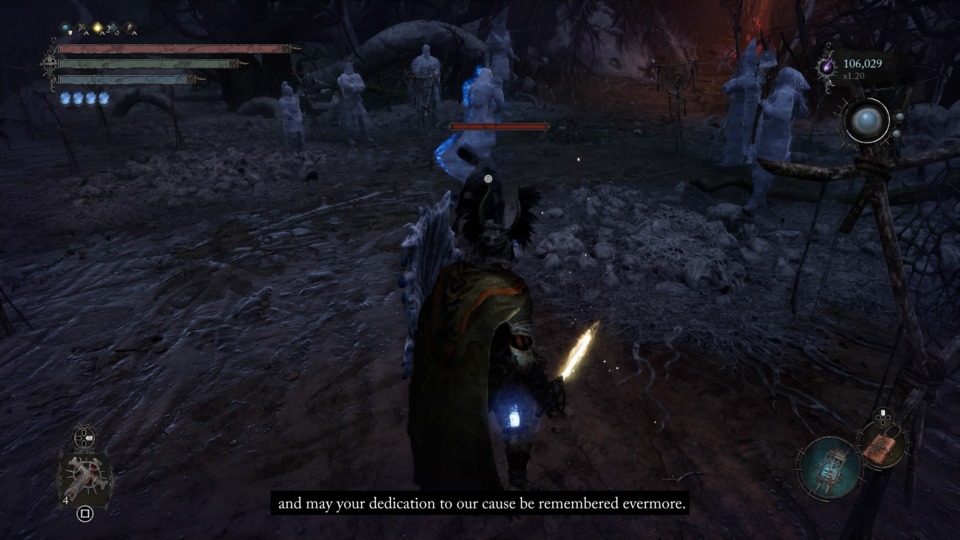
“Actually going someplace”
Hexworks made another fairly bold move in the structure of its checkpoints that doesn’t fully reveal itself until a second play.
As with other games following the Soulsborne formula, Lords of the Fallen peppers various rest points—called “vestiges”—throughout the world where you can regain your health and healing items, level up, warp around to other rest points, and repawn if you happen to die. The difference is that in this game, these vestiges are relatively few and far between. To compensate, there are a goodly number of set places in the world—"umbral flowerbeds”—at which you can plant a “vestige seed” that becomes your own custom vestige, at which you can do all the things you can do at a normal vestige, including leveling up and warping to and from it.
However, you can only have one of these “temporary” vestiges active; placing a new one will overwrite the old one, and the vestige seeds you need to create them aren’t the easiest thing to come by: they drop from bosses, or from other powerful enemies, or can be bought at a merchant for 2,500 vigor (which is the “souls” of this game… for reference, an early character level costs about 1,000 vigor, so this is not nothing). You can also only hold five vestige seeds at a time.
This system takes some getting used to. My first instinct was to avoid using my vestige seeds as much as possible, until I felt I really needed one. But the developers are clearly trying to train you out of that way of thinking through the course of the game; e.g., it is not unusual for there to be no nearby vestige immediately following a boss. You could be out of healing heading into a new area, carrying a lot of vigor from the boss you just beat, and if you’re too cheap to create a temporary vestige, that’s on you. I did in fact lose a large amount of vigor this way (though I managed to retrieve it… lesson learned).
But here’s where the real twist comes: when you enter a NG+ cycle, the vestiges that you rested at in your first play no longer function. That is to say, all your “bonfires” are just gone. The only one that still works is in the world’s hub area, Skyrest Bridge—the game’s Firelink Shrine equivalent. In order to rest, you must rely 100% upon your own planted vestiges… and recall that you can only have one active at a time. This also means that there is no more warping around to old locations, only between your planted vestige seed and the hub area. That’s it.
When I first discovered this, I was moderately horrified. This did not sound like a good time. But as I entered NG+ to give it a try, more and more I grew to appreciate the chutzpah of this design decision, and the way they implemented it, and all the things they had to do to support it.
First, this wouldn’t have been a feasible thing to ask of players if the world wasn’t designed from the ground up to support it, and this is just what Hexworks has done, because Lords of the Fallen might be the new reigning champ amongst Souls-likes for sheer number of shortcuts to unlock. You can imagine your progress route through the game as being something like travelling along the outer edge of a wagon wheel, with fairly frequent opportunities to travel back along one of the “spokes” to the game’s hub area, Skyrest Bridge, and then continue on your way. In this sense, old areas are never actually as far away as you might think they’d be: there’s always a series of shortcuts you’ll have unlocked in the course of play that will get you back there fairly quickly.
Second, it bears pointing out that this mechanic is by definition not for first-time players. Most will likely bow out after beating the game once, or well before, and so never have to deal with a lack of fast travel at all. And for those who do, well, they’ve already been through the game once, and hence naturally have a much better idea of where they’d like to plant their vestige seeds as they move through the game again. It feels like this is the experience that Hexworks was aiming for all along, but that they (wisely, I think) decided to only foist upon its more dedicated—or, less charitably, masochistic—players.
Nor is this the first Souls or Souls-like game without fast travel, or very limited fast travel. Deck13’s The Surge games, for instance, do not have any form of fast travel. And it can be easy to forget that the first Dark Souls didn’t allow fast travel until halfway through the game, after you acquire the Lordvessel… the difference is that Dark Souls withholds the ability before granting it to you, while Lords of the Fallen grants you fast travel for a first play before taking it away. It’s the “taking away” part that really feels bad. But once you get past that psychological hangup, you realize that the game has given you all the tools you need to succeed.
I am also reminded of some lines from what has got to be my favorite written video game review ever, Tom Chick’s satirical review of Dragon’s Dogma, in which an imaginary EA executive and an EA usability tester named Jared criticize the game for its various design decisions, including this bit:
Jared wants to know why there isn’t any easy fast travel. He got all the way out to that place once, so why can’t he just teleport back out there whenever he wants to come back? What’s he supposed to do, actually go someplace every time he wants to go there?
A lack of fast travel sure is inconvenient at times, but sometimes there’s no substitute for making players hoof it. Speaking to Dragon’s Dogma, I remember thinking at the time that its world felt larger than Skyrim’s—even through the latter’s was objectively larger—simply because you were forced to actually travel it, rather than warp around from anywhere to anywhere.
Can I copy your homework?
If you think this has all sounded way too glowing so far, well, worry not. Because while there are places where Hexworks has made some bold and cool design decisions, in many other places it seems to have simply defaulted to doing things the way From Software has done them for no particularly good reason.
To give one really minor example that pretty well sums this up: it’s usual in the Souls games for “boss weapons” to only have half the number of upgrade levels, say ten instead of twenty, while making each of those upgrades twice as efficacious (this was the case in the first Dark Souls). And the exact same thing is true in Lords of the Fallen, in which boss weapons can be upgraded five times instead of ten. Why did they do this? I have no earthly idea. I’m not sure they do, either. Suffice it to say that if there is some baroque mechanic that has been perpetuated by From Software over the years upon the unsuspecting public, there’s a very good chance that it’s also in Lords of the Fallen, whether it makes much sense or not.
The burden of knowledge
For me, the most frustrating aspect that Hexworks has lifted from the Souls titles is its NPC quests, which are as opaque and convoluted as they’ve ever been in a game like this. There are all sorts of fail states for these things that players have no way of knowing about without resorting to a guide beforehand.
As one example, there’s a boss named “Lightreaper” who is supposed to kill you in a scripted death twice throughout the game before you finally confront and beat him near the end for real… and there are a couple of questlines that require calling NPCs to fight with you during this third, final encounter. But if you happen to actually beat him during one of those first two encounters—which is possible, though very difficult—you’ve actually screwed yourself out of finishing a quest. In that case, the player is punished for being too skillful.
In other cases, in order to advance a questline you’ll need to track down an NPC in different places throughout the world in a particular order… often without knowing even the general region they’ve gone to, or that you’re supposed to be looking for them at all.
Look, I get that quests like this which are more emergent and organic can theoretically be more impactful than just following objective markers and a quest journal. But sometimes what sounds good on paper doesn’t always work that well in practice. In fact, I’d argue that in some ways the prevalence of online guides has ruined this sort of thing for its more dedicated players.
For instance, I think of Demon’s Souls’ world tendency mechanic, which at first seemed neat, but that I eventually grew to hate. When you don’t know how it works, it seems like this cool dynamic system in which occasionally things change for inexplicable reasons (corresponding to pure white or pure black world tendency opening a locked door or spawning a new enemy), making the world seem alive. But as soon as you understand exactly how the system works, and the ways in which it can be manipulated, it becomes another awkward thing to manage and worry about, which includes doing things like killing yourself before you enter the world to save the world tendency from swinging toward black, etc.
All of that is to say: if I couldn’t just jump online and look this stuff up, I wouldn’t be burdened with the knowledge of all the stuff I’d missed, and hence wouldn’t know enough to care. But in a world in which I can jump on an online wiki, look at a list of equipment, and realize that I’d missed a cool weapon or spell I would’ve liked to use because I’d triggered some unknowable fail state in an NPC quest is… aggravating. So, yes, I and other players like me are partly doing this to ourselves. But that doesn’t actually mean that these quests need to be as obscure as they are, or be as easily fail-able as they are.
Other shortcomings
It should also be no surprise to people familiar with From Software’s games that even though Lords of the Fallen can be played offline, even then, you cannot pause the game. I mean, who would want a pause feature, right? You filthy casuals. Though, also like some From Software games, there's a sort of hack-y way to pause: enter the game’s photo mode. That will pause it! Somehow this seems to make the lack of a “legit” pause button even more galling, because it’s clearly not a hard thing to implement.
Meanwhile, enemy variety, while not the worst I’ve seen in a game like this, is far from stellar. More than once the game pulls the trick of having an early-game boss that becomes a standard enemy type later on (at least four times I can think of off the top of my head, and there are probably more I’m forgetting). And there are a lot of enemy types that just keep popping up in different zones throughout the game, the only difference being that they now deal more damage and can take more hits. They don’t even bother doing a palette swap.
The game also seems to fall into the trap, especially in the latter half, of increasing difficulty by simply throwing hordes of enemies at you at the same time, probably my least favorite form of difficulty in games like this. This is further exacerbated by the lock-on camera feeling just plain bad. Way too often I couldn’t get it to lock onto an enemy at all at first, and when this happens, clicking the R3 button instead has the effect of centering the camera in the direction my avatar is facing… which is often not looking directly at said enemy, so I end up losing track of them.
Finally, the UI feels rudimentary, clumsy, and lacks a lot of customization features. E.g., I was particularly annoyed that there was no option to stop the game from automatically equipping new consumable items to my hotbar, leading to me more than once using a newly acquired item when I had meant to quaff a healing potion. I also didn’t see any colorblind options, or other accessibility options.
Further quick-hit observations that I’m too lazy to organize better
- I don’t think I’ve played a game like this that had more i-frames on its dodge animations. Those i-frames seem to go on for days. Generally speaking, I approve. I don’t have the best twitch reflexes out there, and a little more lenience on this front feels good.
- Shields exist, but make the interesting compromise of (in most cases) not blocking anywhere near 100% of damage (more like 40% or 50%). Instead, the damage your shield lets through “withers” your health (i.e., turns it grey), which can then be leeched back fairly quickly from enemies… but if you’re hit once for real, all that “withered” health instantly disappears. Seems like a pretty decent system; it somewhat discourages the turtling method, incentivizing you to stay aggressive, but doesn’t actually preclude such defensive measures.
- I don’t have a lot of negative things to say about either the visuals or the audio. The game looks good, and sounds fine. I thought some of the voice acting was particularly good; there was one NPC speech at the end of a questline in which the guy basically went rapturously insane, and it was… quite compelling. (I wish I’d though to capture it so I could share, because it’s really something, but I didn’t, and haven’t been able to find an online video of that moment just yet. C’est la vie.)
- I hated the intro movie. It looked pretty enough, but came off as being the most bog-standard dark fantasy fare known to man. That’s too bad, because once you get into the game, the writing and characters get better. But the intro movie mostly just made me roll my eyes and sigh. It truly seemed like a case where they would have been better off explaining less at the start so as not to highlight how generic the overarching plot actually is (which is From Software’s true trick in their own stories, of course: relative incomprehensibility hides a multitude of other writing sins).
- Speaking of this intro cinematic, skipping it requires holding a button. Every. Time. And generally speaking, it feels like they make you hold a button in unnecessary places, then switch to a single press where you might reasonably want a hold. E.g., loading your game from the title screen also requires holding the button—when there are no real stakes. But when buying an item from a shop? Just a quick press, no hold or confirmation prompt there when you’re actually spending currency.
- A neat thing about creating a character build is that you’re not required to spread out your stat points nearly as much as in the typical Souls game. While all classes will want Vitality and Endurance for HP and stamina, all your other points can be concentrated in a single attack stat, if desired. E.g., there are weapons that require no stat except Radiance (i.e., “holy”)… no Strength or Agility needed. Finally, Hexworks takes this to a fairly crazy extreme by eventually granting you a rune that can be socketed into a weapon or shield in order to make it weigh nothing and require no stats. In my case, I turned the heaviest shield in the game, which normally weighs 50 pounds and requires 40 strength, into a shield that weighs zero pounds and requires zero strength. I love it. Feels like an overpowered Steam Workshop mod/hack, and yet this crazy thing is just built into the game.
All things considered, Lords of the Fallen is an entirely decent “one of those” that should please people who go in for that sort of thing, but it seems very unlikely to make converts of less masochistic players. Still, as From Software’s design sensibilities—both good and bad—continue to infect the rest of the world’s game developers like some sort of inexorable pandemic, this seems like another step along the road to a possible future in which some other studio makes “one of those” that is just as good or better than what From Software has done, and then might, just might, start to address some of its longstanding shortcomings and excesses.